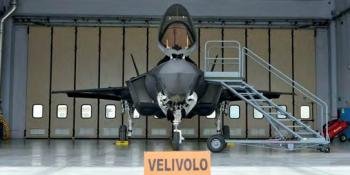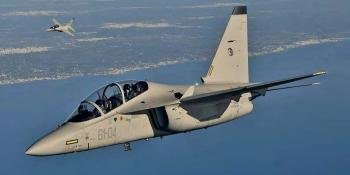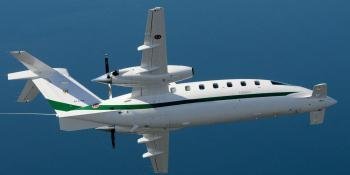ITALY

MORE THAN in other country, in Italy the F-35 programme has undergone tremendous discussion, polemics, and has caused skirmishes between political parties; rather than a serious examination of the programme itself and the opportunities it presents.
As a reminder, Italy negotiated with the United States on the basis of acquiring 131 F-35 aircraft and building a Final Assembly and Check Out (FACO) factory. The FACO is destined to produce all aircraft procured by both Italy and the Netherlands, and 1,215 wings or fuselage sections for Lockheed Martin.
Italian politics, American charm
Unfortunately, in 2012, Italy’s ‘technical’ government led by Mario Monti decided to reduce F-35 procurement to only 90 aircraft as part of a spending review designed to reassure the European Union and the financial markets about Italy’s debt. This not only reduced the Italian F-35 buy by 41 aircraft, but also impacted on production losing 380 wing or fuselage sections, amounting to a €3 billion loss in revenue.
When opposition left-wing party Movimento 5 Stelle (M5S) gained a significant vote in this year’s Spring 2018 election, and after three months of negotiations was able to form a government with the right wing Lega party, many were worried of the effect not only to the Italian F-35 programme but the entire F-35 programme, especially when Ms Elisabetta Trenta, who belongs to M5S, was appointed as the new Minister of Defence.
Ms Trenta didn’t waste any time before releasing her first official statement about the F-35 programme in July: “We will not buy more F-35s. We have always been critical about this programme, and we are drawing back consequences that come from decisions taken by the previous government. Thus, we will assess the programme and its industrial off sets. No decisions have been taken on this dossier, at least by now.”
Trenta later added: “What I would like to do is lighten the load since we have other spending commitments in Europe. We will try to stretch out deliveries instead of cutting the order, which would reduce off sets and mean penalties.”
However, those who understand the programme and Italian politics know that such declarations are used more for internal use, to reassure M5S supporters, than to threaten the programme.
The one phrase used in the statements to really consider as important is “we will assess the programme and its industrial off sets”, which stresses the importance given above all to Italy’s national interests.
Realistically, the Italian government faces three choices: to spread the costs lengthening the process of its F-35 aircraft acquisition; to reduce the costs, through a review of the programme, to be carried out with the US government and Lockheed Martin; or to again cut the total number of aircraft.
At the time of writing the review process was offcially still under way, but further facts and declarations have been made in recent weeks, all adding to the confusion of the situation.
At the end of July, after a meeting between Italian Prime Minister Giuseppe Conte, and US President Donald Trump, the Italian leader spoke about an “accurate and weight evaluation” of the F-35 programme, and of “transparency with the US partner”. The US Ambassador in Italy, Mr Lewis Eisenberg, commented on the meeting: “The Italian investment in programmes such as the fifth-generation JSF demonstrates its commitment for excellence in the defence sector, which generates jobs in Italy and in the United States.”
However, in a September 6 interview with the Italian newspaper Corriere della Sera Minister Trenta announced: “As soon as the technical evaluations are complete, we will communicate them to the citizens in a transparent way, but I anticipate we are working toward a reduction, coherently in line with our previous statements”.
Later, on September 21, on the occasion of Mr Eisenberg’s visit to the Italian FACO, the American ambassador praised the work and the professionalism of the technical personnel at the FACO, which he described as one of the most strategic investments by Italy in the defence sector. Eisenberg said: “The investment is in line with the target of 2% of the PIL of the defence budget by 2024, and that more than 900 jobs have been created in the area [of the FACO], a figure that could reach more than 6,000 all over Italy, when the programme is at full pace.”
A military perspective
But what about the Italian military? At a hearing in front of the Defence Committee of the Italian Parliament, the Marina Militare Chief of Staff, Admiral Valter Girardelli confirmed the F-35 programme, “cannot be ignored, and is of fundamental importance, in order to fully develop the strategic capability of the Cavour aircraft carrier.”
Aeronautica Militaire Chief of Staff, General Enzo Vecciarelli complained to have never had the opportunity to explain what it means, militarily, to have or not to have fifth-generation fighters, what they can do compared to others, and their cost effectiveness ratio”.
Finally, Carlo Festucci, General Secretary of the AIAD, the Italian defence industries association, wrote in a magazine: “I believe it is a mistake to consider modifying Italian participation in the programme, considering where it is now. Much more useful and opportune, would be to ask the US government, the Joint Program Office, and Lockheed Martin for a clear indication of the industrial off sets for Italy, even under different forms. We have to demonstrate to the Parliament and to the government that selection of the F-35 by the armed forces beyond an operational need, is also an investment from a technological, industrial, and occupational point of view.”
Struggle
All this means that the Italian government faces a clear struggle between its foreign policy, industrial plans, and internal policy in order to comply with the pre-election promises of the M5S party, and the needs of the state.
If Italy decides to stick with its previous decisions on the F-35, and faces the required extraordinary cost, it will try to gain other defence sector contracts, in addition to the FACO workshare.
In the past, in spite of excellent products, such as the C-27J tactical transport and the AW101 heavy helicopter, Italy’s defence industry was not really prized by the US government. The C-27J, selected by the US Army to replace its C-23 Sherpas, was later cut by the US Air Force, while the AW101 having won the contest for the new Marine One Presidential helicopter, was washed out by President Obama as unnecessary, after some $4.4 billion was spent on development.
Despite the September 24 announcement about selection of the Boeing-Leonardo MH-139 helicopter in the US Air Force, competition to replace UH-1N helicopters may be part of a ‘new deal’ between Italy and the United States. However, it is difficult to imagine that a potential further cut to Italy’s total F-35 acquisition can lead to new orders for Italian products by the US Department of Defense.
Latest rumours coming from Rome suggest the Italian government will opt for a new cut, which could result in the acquisition of only 60 F-35As for the Italian Air Force, plus an unspecified number of F-35Bs for the Italian Navy. But here is the deal, if the Italian government opts to further reduce the number of F-35s ordered, it’s difficult to think that Italy will be considered by the US administration and Lockheed Martin as a reliable partner for the future, and new cuts to the FACO’s total production run will follow.






